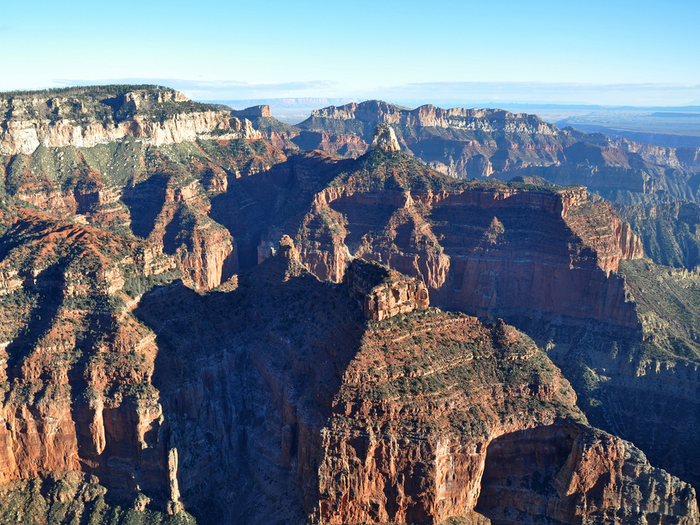The Wonders of the Grand Canyon
The Grand Canyon is an awe-inspiring natural wonder. Spanning over 277 miles long and up to 18 miles wide, the Grand Canyon is a spectacular gorge cut by the mighty Colorado River. This stunning landscape is located in Grand Canyon National Park and has captivated the hearts and minds of visitors since its discovery. In this blog post, we will explore the wonders of the Grand Canyon and discover why it is considered one of the most majestic places in the world.

Its vastness
The Grand Canyon National Park is truly immense. Spanning over 1,900 square miles and plunging nearly a mile deep, it is the largest canyon in the United States. The Colorado River, which meanders through the park, stretches 277 miles in length and carves its way through millions of years of history. The canyon walls are composed of a variety of rock layers, each with its own unique characteristics that tell the story of the Earth’s past. From ancient seabeds to volcanic eruptions, the Grand Canyon is home to a diverse array of geological features that never fail to amaze. Every twist and turn reveals something new, making it one of the most awe-inspiring sites in the world.
Its unique geology
The Grand Canyon is world-renowned for its unique geology, stretching over 277 miles of Northern Arizona. The Grand Canyon National Park is home to some of the most striking geological formations and topographical features on the planet. Over two billion years, the Colorado River and its tributaries have carved a deep, colorful chasm that reaches depths of over one mile in some areas. The rocks found throughout the canyon reveal a record of life from many different periods, from Precambrian sedimentary layers to Cenozoic volcanic deposits. Visitors to the Grand Canyon National Park can marvel at the diversity of rock formations, including the red sandstone cliffs, the limestone slopes, and the ever-changing colors of the canyon walls.
Its many different ecosystems
The Grand Canyon National Park is home to a variety of unique ecosystems and species. From the steep and craggy cliffs of the Inner Canyon to the rolling hills of the North Rim, this national park offers an array of habitats for its inhabitants. At the highest elevations, you can find pinyon-juniper woodlands, ponderosa pine forests, and aspen groves, as well as a host of mammals like mule deer, coyotes, black bears, mountain lions, and bighorn sheep. Moving down the canyon walls, you’ll encounter the desert scrub and cactus-filled vegetation of the Lower Sonoran Zone. This is also home to rattlesnakes, lizards, and roadrunners. Closer to the river, the Grand Canyon supports riparian areas and wetlands where a variety of birds like eagles and falcons can be spotted. With so many diverse and unique ecosystems, it’s no wonder that the Grand Canyon National Park is one of America’s most popular destinations for outdoor exploration and adventure!

Its human history
The Grand Canyon National Park has a long and fascinating human history that dates back thousands of years. The area has been home to many Native American tribes, including the Havasupai, Hualapai, Navajo, Southern Paiute, and Zuni. For centuries, these tribes have lived in and around the Grand Canyon, utilizing its natural resources for survival and spiritual practices.
The Grand Canyon was first visited by Europeans in 1540 when Spanish explorer Garcia Lopez de Cardenas discovered it while searching for the Seven Cities of Cibola. While explorers have continued to visit the canyon over the years, it wasn’t until 1869 that it became a tourist destination when John Wesley Powell explored the canyon via rafting down the Colorado River.
In 1919, President Woodrow Wilson declared the Grand Canyon National Park to preserve its spectacular beauty and promote tourism. Since then, millions of visitors have come from all over the world to experience its grandeur. Today, Grand Canyon National Park is one of America’s most visited tourist destinations and a symbol of our nation’s history. It’s also the second-largest national park in the country, with more than 1 million acres of land encompassing incredible landscapes from high plateaus to deep river gorges. Visitors can take advantage of numerous recreational activities like hiking, camping, whitewater rafting, horseback riding, and more. There are also countless opportunities for wildlife viewing as Grand Canyon National Park boasts more than 1,500 species of plants and animals. Whether you’re looking to explore deep into the canyons or admire its grandeur from overlooks along the rim, Grand Canyon National Park offers something for everyone.





